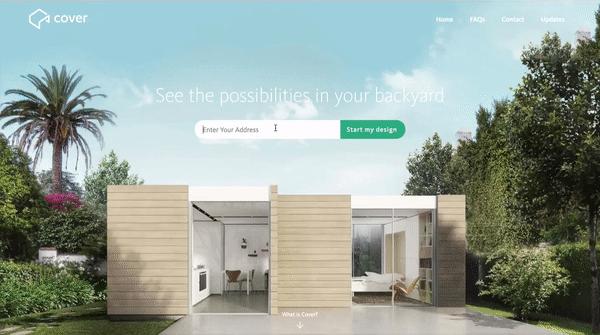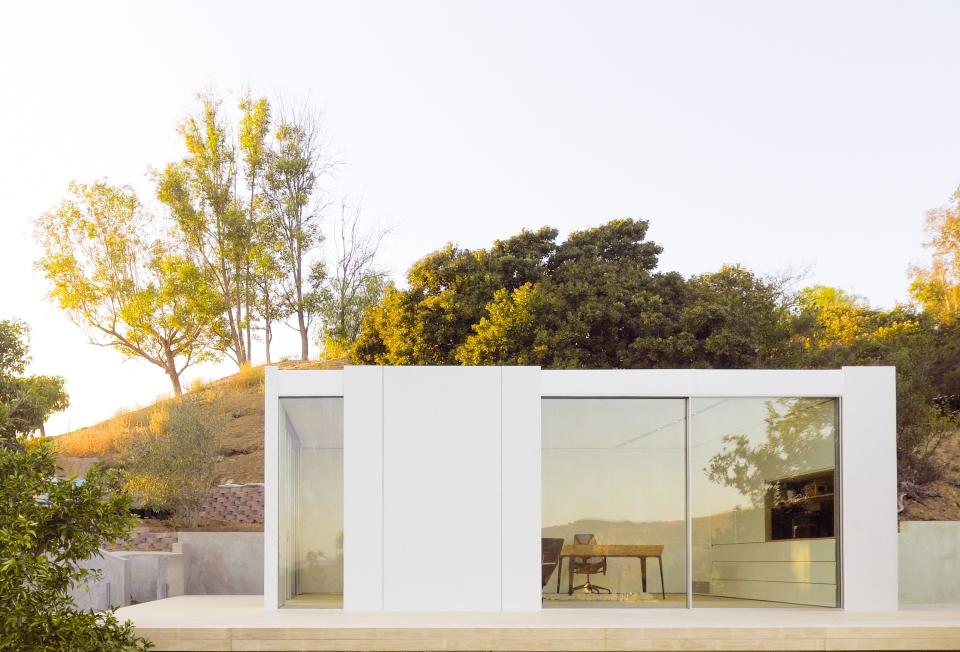Cover Launches New Tool to Simplify the First Step of the Prefab Home Process
Last fall, prefab housing start-up Cover completed its first algorithmically designed backyard unit in the hills of Los Angeles. And though Cover’s process makes it easy to design an accessory dwelling unit (or ADU), figuring out whether or not zoning laws even allowed a prospective mini-home owner to have one has been a different story. “You had to do dozens of hours of research at the local planning department or hire an architect to do that on your behalf,” Cover CEO Alexis Rivas tells AD PRO.
But thanks to the launch of the Cover Planner Tool, those challenging exploratory efforts could be a thing of the past. Using some of the same underlying technology that powers Cover's design process, Los Angeles residents can now get an immediate assessment of whether or not they can build an ADU on their property.
“What we’ve done with this tool is programmatically go through all of the residential parcels in L.A. and digitize their zoning logic,” Rivas says. “It’s integrated into our software so that you can look up and immediately understand where within your property you can build, how big you can build, all of these restrictions.”
By inputting an address and making a few clicks, a prospective customer can not only discern eligibility, but also view sample designs that would work for their specific lot. They then put down a design fee payment and Cover performs a more specific property assessment (taking photos, understanding tree location, etc.). From there, the customer fills in a 50- to 100-point questionnaire about their form and function preferences for the space, which is fed into Cover’s proprietary design algorithm.

The Planner Tool currently works only with addresses in and around Los Angeles, Cover’s home base. But given the challenges of the housing market and the shifting nature of home ownership, Rivas recognizes that expansion is perhaps inevitable. “All of California is really under a housing crunch—these backyard homes can provide additional passive income, and they’re also a great way to increase the housing supply,” he says. “There’s a growing number of people who want this alternative form of housing.”
That’s not to mention the potential for such a tool to improve the process of urban planning. “The implications of tools that can computationally identify zoning and construction possibilities in cities is massive,” Rivas says. Digitizing that data and putting it in a tool would “allow policymakers, real-estate developers and homeowners to understand how their neighborhood might change over time. That has huge benefits to making intelligent regulatory decisions.”
It’s too early to tell if the Cover Planner Tool will have the massive impact that Rivas hopes it might. But with lawmakers like California State Senator Bob Wieckowski (who attended a Cover launch event for the tool on Friday) spearheading legislation to loosen the restrictions barring these sorts of backyard developments, it seems likely that more and more homeowners will punch in their address and at least explore what’s possible.

